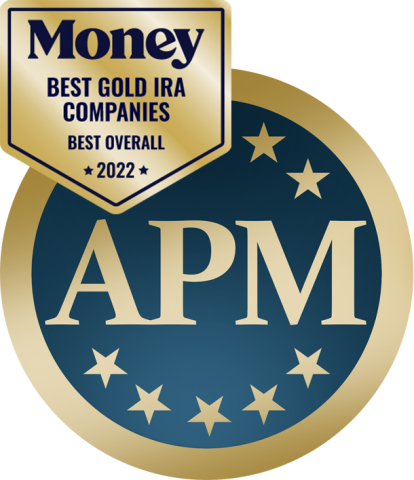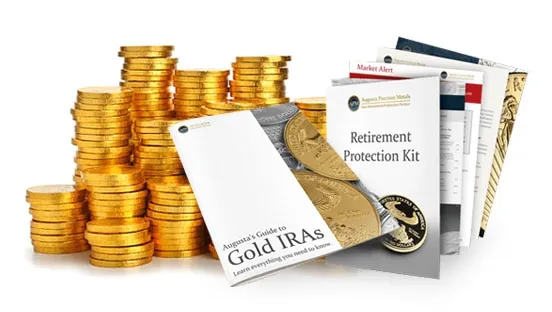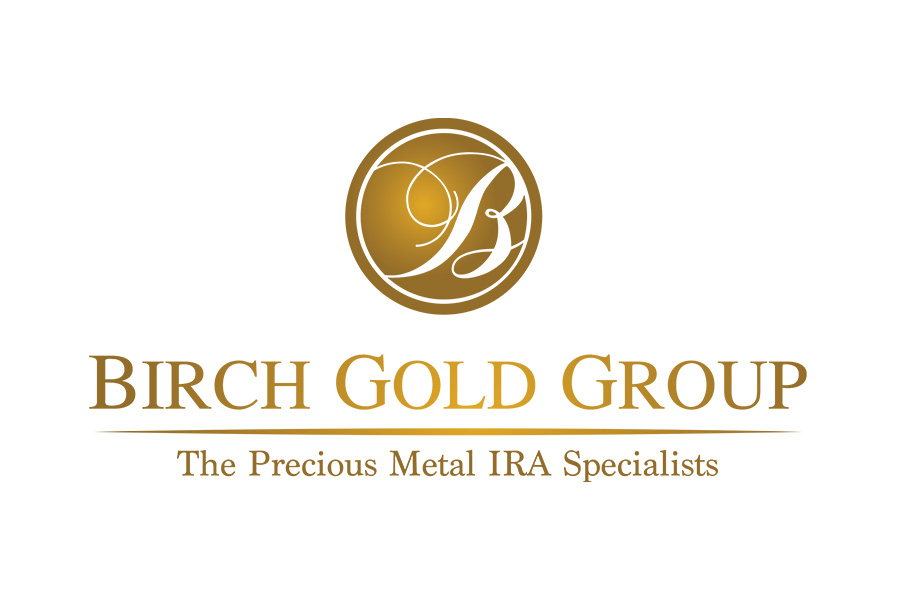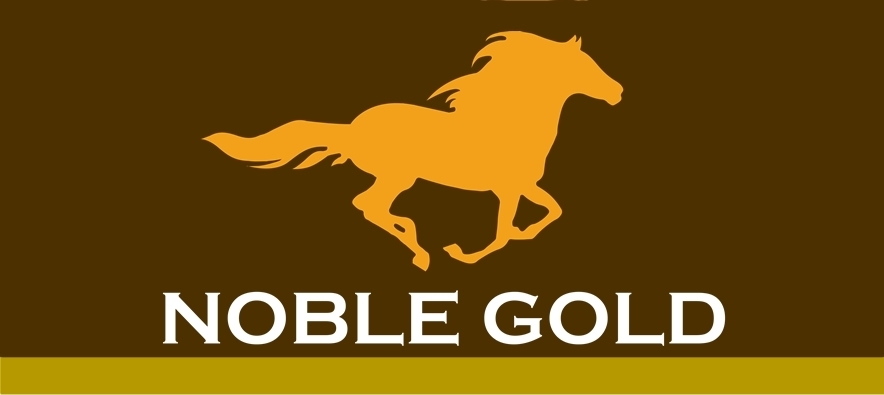Table of Contents
How do I Convert my IRA to Physical Gold?

Convert IRA to physical gold. You may be asking yourself, How do I convert my IRA to Physical Gold? If so, then you have come to the right place! In this article, we will explore the process and steps of converting an existing IRA to Gold, as well as what kind of metal you should invest in for your retirement fund. We also provide some tips and advice on how you can save money on taxes by moving your retirement fund into precious metals, so read on to find out more!
Convert IRA to Physical Gold: The Basic Rundown
Request Your Free Investment Guide Now!

1. Decide whether or not you want to convert your entire IRA into physical gold
When you are thinking about the ways to transfer your IRA over to physical gold you have two different options.
Option 1: Close the IRA and pay the taxes & penalties
You could liquidate your IRA account and purchase gold or silver with the proceeds. While it may seem like an easy solution, it can have negative tax consequences for you. If you are currently age 59 1/2 or younger you will incur a 10% early withdrawal fee penalty. The distributed funds will also be subject to income taxes as well. There is also a chance the distribution could push you into a higher tax bracket where the overall liquidation cost of your IRA could increase.
Option 2: Move your conventional IRA funds to a Gold IRA
This option came about in 1997 when the IRS put in place the Taxpayer Relief Act. This tax law revision make you able to purchase physical Gold, Silver, and other precious metals inside a self-directed IRA.
You are also able to move funds from one account to another with tax advantages. The Taxpayer Relief Act enables you convert an IRA to Gold without any tax consequences or other penalties.
2. Determine which type of gold you want to buy
If you’re looking to invest in gold, you’ll need to decide between investing in bullion (bars) or coins. Bullion bars are made of pure gold, while coins contain both precious metals and base metals. Coins are generally considered safer investments because they are harder to counterfeit. However, bullion bars are easier to transport and store.
3. Figure out how much gold you need.
There are two main ways to convert your IRA into physical gold: through direct purchase or exchange. Direct purchases involve buying gold directly from a dealer, whereas exchanges allow you to sell your existing IRA holdings and receive cash in return.
4. Buy your gold.
If you’re looking to buy physical gold, there are several reputable dealers who will help you make the transition. In addition to offering competitive prices, these companies also offer convenient options such as online purchasing and 24/7 customer service.
Buyer Beware! Gold IRAs are Unregulated!

What is a Precious Metal IRA? Convert IRA to Physical Gold
A precious metal Individual Retirement Account (IRA) is a self-directed retirement account allowing individuals tax advantages, flexibility and control of their savings. The difference between a traditional individual retirement account (IRA) and a precious metal IRA is that precious metals IRAs allow investors to diversify their portfolio with gold, silver or platinum. Investors can also open gold or silver IRA and store it at home or put it in safekeeping with third-party storage services.
Considerations for Investing in Precious Metals through an IRA
If you’re thinking about buying precious metals, it’s important to understand how they compare with other investment options. Precious metals are not a substitute for stocks, bonds or mutual funds. If your goal is long-term growth or income, consider other financial options. If a drop in price causes you to sell your metal holdings and buy back at a higher price, then you haven’t really lost money—you’ve just missed an opportunity. There may be other tax advantages associated with holding physical gold in an IRA versus selling it outright, so be sure to consult a professional before making any decisions.

Converting IRA to Physical Gold: How do IRA’s Work?
If you’re thinking about converting your existing IRA or 401(k) into gold, you need to understand how IRAs work. Basically, if you withdraw funds from a traditional IRA or 401(k), you must pay taxes on those assets. However, some types of gold and silver IRAs allow investors to avoid that tax bill by simply holding onto their assets until they reach retirement age—at which point they can start withdrawing without paying taxes.
Converting an IRA or 401(k) to Physical Gold: A Simplified Guide
Converting an IRA or 401(k) to physical gold is a straightforward process that can be completed in a few easy steps. Firstly, individuals should contact a reputable precious metals company to open an account. Once the account is set up, individuals can start transferring their existing holdings from their current account to their new precious metal IRA account.
After the transfer is complete, individuals can use their savings to purchase gold or silver assets, which will be stored securely until they reach retirement age and are ready to make a withdrawal. By converting an IRA or 401(k) to physical gold, individuals can diversify their portfolio and protect their savings from market volatility and inflation. However, it’s important to keep in mind that precious metals should not be considered a substitute for stocks, bonds, or mutual funds if the goal is long-term growth or income.
Top Gold IRA Companies
Our recommended Providers are researched and vetted by us and many top consumer organizations. This is the short list of the most consistent companies we could come up with. Request information from them below.
#1: Augusta Precious Metals
Our Rating: 10/10
Pros
✅ ZERO complaints with the BBB and BCA
✅ Highest reputation and customer satisfaction in the industry
✅ Non-commissioned sales team
✅ Transparent pricing with up to 10 years of fees waved – with qualifying purchase.
✅ Hall of fame quarterback, Joe Montana was an actual customer before becoming their spokesperson!
Get a free gold IRA Kit now!
Call: 1-855-470-4636
#2: Birch Gold Group
Our Rating: 9.9/10
Pros
✅ Great company commitment to education and communication
✅ Impeccable customer service
✅ Silver, gold, platinum and palladium available
Cons
❌ Signup process can only be done thought a specific link
❌ Certain fees are not disclosed up front
❌ No buyback guarantee of precious metals
#3: Noble Gold Investments
Our Rating: 9.6/10
Pros
✅ One of the best no questions asked buyback programs in the industry
✅ Free delivery of your precious metals to your door at any time
✅ Over 20 years of experience in the precious metals industry
✅ Gold, silver, platinum, and palladium available
✅ One of the lowest barriers to entry – ideal for smaller investors
Cons
❌ High annual fees for low balances
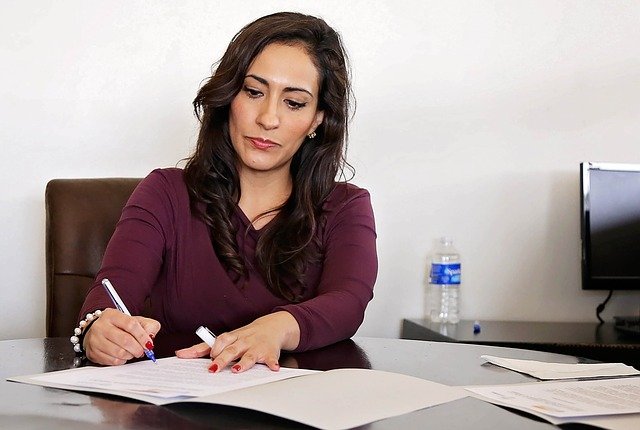
Is Converting an IRA to Gold Right for You?
Now that you’ve looked at all of your options, you may be wondering if converting your traditional IRA to precious metals is right for you. There are a few pros and cons worth considering, but one thing is clear: If you want an easy way to diversify your retirement portfolio, it’s an ideal choice.
The only question now is which type of investment option will work best for you.
Making The Switch From Traditional To Roth: You may want to choose a conversion when you’re planning on drawing down funds from your traditional IRA or 401(k) instead of saving toward retirement—otherwise, Uncle Sam will stick his hand in there first. This can make sense if you have high-interest debt or need money for something else; don’t forget to use our retirement calculator before making any decisions!
Converting into a Roth from a Traditional IRA
Are you considering converting your traditional IRA to a Roth IRA? This process involves moving money from your traditional IRA into a Roth IRA, which offers tax-free withdrawals in retirement. There are a few different options for making this conversion, including working with a financial advisor or going through your financial institution directly. In any case, it is important to be aware that you will need to fill out IRS Form 8606 for any year in which you make a conversion.
Converting to a Roth IRA is a big decision that can impact your long-term financial planning. It’s important to carefully consider the pros and cons of this conversion and how it fits in with your overall financial goals and strategy. A financial advisor or tax professional can help you weigh the benefits and risks, and help you determine if converting your traditional IRA to a Roth IRA is the right choice for you.
Our Top Recommended Gold IRA Company

Convert IRA to Physical Gold

What Are Other Benefits Of Investing In A Gold or Silver IRA?
So, what are some other benefits of investing in a precious metal investment, such as gold or silver, with an existing Individual Retirement Account (IRA)? Let’s take a look at how it works.
The process of converting an existing Individual Retirement Account (IRA) into physical gold or silver is not a complicated one. It’s done through a rollover, which means your assets will be transferred from one account, in order to be converted into another.
Because you are rolling over your existing account, and not opening a new one, you don’t have to go through any of the formalities involved in creating an IRA or setting up annual contributions. All that is required is for you to tell your financial institution how much gold or silver you want transferred into your precious metal account. A custodian will then take care of transferring those assets from your traditional retirement account.
You Can Always Transfer Funds Back to Your Previous Account
Buyer Beware! Gold IRAs are Unregulated!

There is no downside to opening a precious metal Individual Retirement Account (IRA) as you will be able to easily transfer back into your existing account at any time. So even if you simply want it as an option for when you retire, there is no reason not to get started now and roll over your assets into a new gold or silver IRA.
Are you interested in opening a gold or silver Individual Retirement Account (IRA)? Get started by asking one of our recommended providers how it works. They will make sure you understand how it all works, and help you every step of the way with your rollover process. You can also ask them about any other precious metal related questions—they have an expert on staff waiting to help!
What About Taxes?
One of the first things people will ask you about physical gold IRAs is, Aren’t you worried about taxes? If you own bullion or coins and make a profit by selling them, that money is taxed. However, it’s important to know that you can take an IRA distribution for your physical gold and avoid being taxed if you follow Internal Revenue Service (IRS) guidelines.
There are three different scenarios in which you can take a physical gold distribution and avoid taxation:
- you’re over 59 1⁄2 years old
- The distribution is due to disability
- It’s a rollover or other tax-free transfer, subject to certain restrictions.
In addition, if you own gold coins as part of your retirement account and sell them for less than $75 per coin within two years of purchasing them, there won’t be any capital gains taxes either.
Once you convert your retirement account, you’ll need to take distributions periodically. You can decide how often you want to receive them (for example, monthly or quarterly), but if you start taking payments before age 59 1⁄2 and don’t follow IRS guidelines, your account will be penalized and taxes will be applied.
Avoiding Taxes and Penalties on Physical Gold or Silver
However, in most cases you won’t need to worry about taxes until your account is liquidated or converted into a different asset. Furthermore, if you have an existing Traditional IRA or Roth IRA and want to add gold or silver coins, you don’t need to pay taxes on that either. You can simply take out cash from your existing account and deposit it into your new gold/silver-backed account.
As long as you follow IRS guidelines, there are no income taxes on physical gold or silver. The price of bullion is typically much higher than spot prices, but that doesn’t mean you’ll be taxed at a higher rate. In fact, most people won’t be taxed at all when they liquidate their account and receive payment for their gold coins or bullion.

You may have heard that you can roll over your Individual Retirement Account (IRA) into a gold IRA. While this is true, there are a few things you should know before doing so. First, it’s important to understand what a gold IRA rollover is. Essentially, this refers to the process of transferring assets from one retirement account to another. This can be done for a number of reasons, including diversifying your portfolio or converting your traditional IRA into a Roth IRA. If you’re thinking about rolling over your IRA into a gold IRA, there are a few things you need to know first.
The exact process for rolling over your traditional IRA into a gold IRA will vary depending on where you work. However, it’s likely that you’ll need to contact your current bank or brokerage company. They should be able to walk you through any requirements needed in order to roll over an existing traditional IRA. If they can’t help, try contacting a third-party custodian, such as U.S.-based Goldco Precious Metals Inc., which can also convert your traditional IRAs into gold IRAs if your current provider isn’t able to do so. Other factors may affect how a rollover is handled, such as whether or not you currently hold a non-IRS-approved annuity within your retirement account that is valued at $250,000 or more.
You can convert your Individual Retirement Account (IRA) to gold without penalty by doing a rollover. A rollover is when you move the money from your current IRA custodian to a new one, and you can do this once every 12 months. To start, you’ll need to find a gold dealer or broker that also offers IRAs, then open an account with them. Once your account is open, you’ll instruct your current custodian to transfer the funds to your new one. The funds will then be converted into gold bullion and stored at a secure facility. You can choose to have your gold delivered to you or keep it stored at the facility.
You’ll need a minimum of $1,000 to open an account, which must be invested in physical gold. Once you’ve established your account, you can ask your current custodian for a transfer kit. With it, you’ll provide information on how much money you want to transfer over and order any gold coins or bars that you want. When transferring funds between custodians, they may not recognize specific items in your portfolio so speak with them before placing an order so they don’t try to stop or reverse the transaction once it begins. Although there are a few limitations on IRAs during regular retirement years, once money is moved into an IRA after retirement these rules don’t apply.
You can’t buy physical gold with your Individual Retirement Account (IRA). However, you can roll over funds from your IRA into a gold-backed IRA. A gold-backed IRA is a retirement account that allows you to hold gold bullion in your portfolio. The gold must be stored in an approved depository and you will pay annual storage fees. When you retire, you can take possession of the gold or sell it and use the proceeds for your retirement income.
Yes, you can roll over your Individual Retirement Account (IRA) into gold or silver. This is called a gold IRA rollover. A gold IRA rollover allows you to invest in gold or silver without having to pay taxes on the transaction. You can roll over your IRA into gold or silver by transferring the money from your IRA to a gold dealer or by buying gold or silver coins with your IRA funds.
Gold is taxed differently than other metals in an IRA. The IRS taxes gold at a rate of 28% for coins and bars, and 22% for jewelry. There are also state taxes that vary by state. To calculate the tax on your gold, you need to know the value of your gold, the purity of your gold, and the weight of your gold.
There are two main options for opening a gold IRA, including: Purchasing physical bullion (coins or bars) through a custodian of choice—such as a bank, broker or other financial institution; or Transfering your existing retirement funds into an authorized precious metals account. You can use either method, but there are some important differences between them. When you buy physical bullion directly from a custodian—either in person at their office or by ordering it online—you’ll likely be charged sales tax on the purchase price and any commission associated with buying, selling and storing your gold IRA investments.
If you choose an authorized precious metals IRA, however, you’ll only be taxed when withdrawing from your account—at a rate that depends on your IRA provider and current federal laws. This tax rate is often lower than what you’d pay by buying physical bullion directly (note that certain types of IRAs, such as Roth IRAs, are exempt from income taxes). The second option involves opening a new precious metals account through an authorized IRA custodian. In most cases, once you’ve opened a precious metals IRA with a reputable company like Goldco Precious Metals or Augusta Precious Metals, they’ll assist in moving funds into and out of your account via check or wire transfer.
It’s best to keep an eye on the political and economic climates before deciding what asset class makes the most sense for you in retirement, though there are several ways you can convert funds from a traditional retirement account such as a 401(k) or IRA without incurring taxes or penalties. You have three options when rolling over from a traditional retirement account: 1) using the 60-day window that begins on the day after leaving employment; 2) withdrawing all funds and paying ordinary income tax plus a 10% penalty if you’re under 591⁄2; 3) transferring funds directly to another qualified plan or IRA rollover, which involves meeting specific rules but avoids early withdrawal taxes and possible age restrictions on IRAs.
While converting a Roth IRA account to gold isn’t quite as simple as with a traditional IRA, there are some ways in which you can do so while avoiding triggering the typical 10% early withdrawal penalty. In most cases, a Roth IRA is converted from one type of investment vehicle into another type of investment vehicle. There is no requirement that says that when you make this conversion, it has to be done on an individual basis. In other words, if you have one account and want to convert all of its assets into gold bullion or silver coins, then this would not be considered an early withdrawal because the asset was transferred from one type of investment vehicle into another type of investment vehicle rather than taken out of the market place altogether and converted into cash (or something else). The rules governing conversions only apply when an individual withdraws money from their account and converts it directly into something else before they reach retirement age (59 1/2).
How To Convert Your IRA To Gold (or Similar Type of Asset)
To Convert Your IRA, You’ll Need The Following:
– Ira Kit : This kit is provided by the custodian for IRAs and will contain a form called an IRS 1099R which is where you provide any required payee information and indicate how much money is being converted from the traditional account type to the Roth IRA or any other type of account you want to open. You can find these forms on the company website or inside your Ira account if you already have one with them.
– Checkbook : You will need to have a checkbook that you can use to write checks with if you are making an electronic payment from your account to another institution or person. In order for transfers and payments made from your IRA account (and other financial accounts) to be successful, you need enough money in that checking account so that there will be sufficient funds for both you and for the recipient of any money being sent out or transferred into their account. The majority of companies accept checks in amounts below $1,000 but may require them for larger transactions; consult with whoever is receiving a transfer before making one if you’re uncertain whether they’ll accept a personal check.


